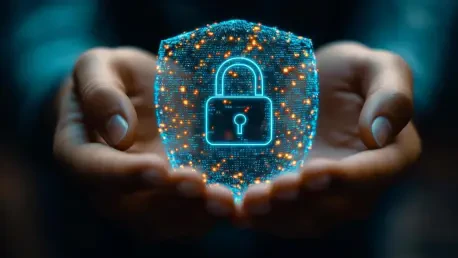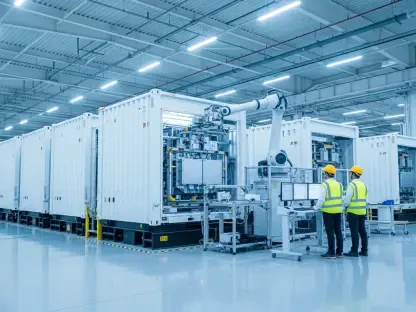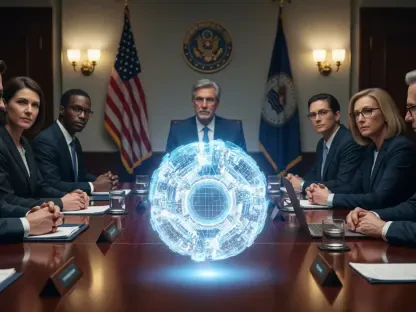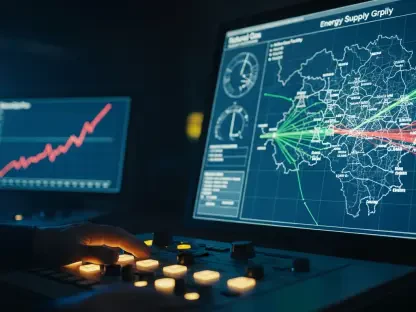As the U.S. continues its ambitious shift towards renewable energy sources, the emerging vulnerabilities associated with the integration and expansion of distributed energy resources (DERs) are becoming more pronounced. This change, marked by the widespread deployment of renewable technologies, demands a keen focus on cybersecurity. Notably, a significant discovery by federal investigators found “ghost” communication modules embedded within Chinese-manufactured solar inverters, underlining the critical nature of securing energy infrastructures. The introduction of millions of DERs has created a complex network, adding new dimensions to pre-existing challenges, including outdated defense mechanisms and the sheer number of endpoints, all contributing to a perilous landscape.
Challenges of Legacy Systems and Diverse Protocols
Outdated Systems Unable to Keep Pace
Traditional grid defense technologies have become outdated in the face of rapidly advancing technology and an ever-expanding grid network. These systems are often criticized for their inability to manage the complexity and scale brought about by new renewable technologies. Millions of endpoints emerging from multiple vendors create inconsistencies in protocols and codebases, while the opaque nature of supply chains exacerbates these vulnerabilities. As a result, the limited understanding of where and how the components are produced contributes to security gaps, making it challenging to detect and mitigate potential threats to the grid effectively. The diversity in equipment and the associated heterogeneous nature of DERs further deepen the grid’s vulnerability to sophisticated cyber threats that are becoming increasingly prevalent.
Security Risks of Physical Exposure
The physical exposure of installations, including rooftop solar panels or roadside wind turbines, presents an additional security layer that requires serious consideration. Unlike traditional utility setups secured within a more controlled framework, these installations are susceptible to tampering and other physical security breaches due to their open and accessible nature. This physical vulnerability compounds the challenge, as these systems lack the robust utility-grade protection needed to secure them against intrusions. The increasing deployment rate amplifies the importance of addressing these security concerns, emphasizing the need for integrated defense strategies that go beyond digital solutions. Securing physically exposed DERs demands innovation in monitoring and protective technologies to ensure the entire grid network remains resilient against evolving threats.
Implementing Solutions for Enhanced Security
Zero-Trust Architectures and Anomaly Detection
To counter the diverse and evolving threats, experts propose implementing robust principles such as zero-trust architecture and independent control logic. Zero-trust architecture requires validating every transaction and communication, which helps mitigate the risks posed by unauthorized access or infiltration. Making control logic independent of field devices ensures long-term flexibility, allowing for seamless future updates and supplier transitions without jeopardizing security. Additionally, employing active anomaly detection, including radio frequency sweeps and artificial intelligence-driven analysis, supplements traditional measures, enhancing the grid’s resilience. These strategies ensure quicker identification and response to unusual activities, potentially thwarting breaches before substantial damage occurs, aiming to protect infrastructure and maintain public trust.
Need for Diversified Supply Chains
The diversification of supply chains coupled with comprehensive documentation like Software Bills of Materials (SBOMs) is pivotal in promoting transparency and security. Encouraging domestic production can ensure that secure inverters and control mechanisms are reliably manufactured, minimizing reliance on potentially insecure foreign components. Expanding production tax credits could boost the manufacturing capabilities within the United States, fostering a more controlled environment for the creation of secure products. Such measures enforce accountability and offer a structural buffer against threats that may originate from compromised components. Emphasizing cybersecurity within these supply chains is a core element of a reliable energy transition, impacting not just production but holistic infrastructure safety.
Future Directions and Industry Collaboration
Prioritizing Security During Design
Manufacturers must integrate security considerations early in the design phase rather than viewing them as an afterthought. This foundational shift will result in systems inherently built to resist cybersecurity threats, facilitating seamless integration within existing grids. Peer-reviewed API documentation and the increased sharing of threat intelligence across the industry can further bolster these efforts. This openness enables stakeholders to benefit from collective wisdom, as opponents continuously evolve their strategies by exploring and exploiting weaknesses. Collaborating at this depth ensures that industry players are better equipped to anticipate and mitigate potential cybersecurity challenges.
Role of Policymakers and Industry Leaders
As the United States continues its bold move toward renewable energy, the complex vulnerabilities arising from the integration and growth of distributed energy resources (DERs) are becoming more visible. This transition, characterized by the extensive use of renewable technologies, demands urgent attention to cybersecurity threats. A noteworthy finding by federal investigators revealed “ghost” communication modules implanted in Chinese-manufactured solar inverters, highlighting the urgent need to secure our energy infrastructure. The proliferation of millions of DERs has resulted in an intricate network that introduces new complexities to existing issues, such as outdated defense mechanisms. The sheer volume of endpoints further exacerbates this complexity, creating a hazardous scenario. Despite these challenges, the shift to renewable energy remains a key objective for the U.S., emphasizing the need for enhanced security measures and innovative solutions to safeguard the nation’s energy infrastructure from potential threats.









